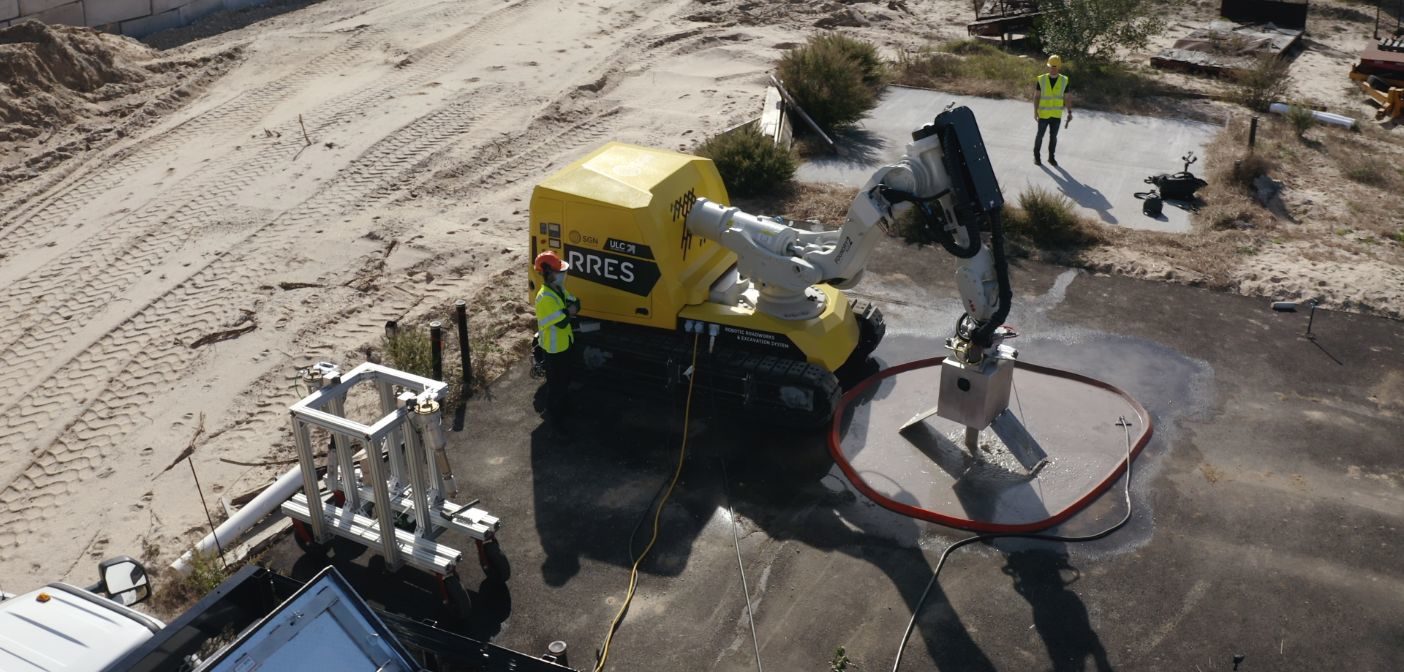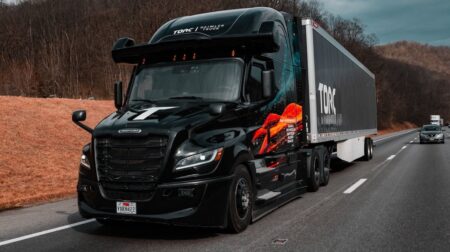UK gas company SGN has teamed up with New York-based robotics firm ULC Technologies to develop and field test its Robotic Roadworks Roadworks and Excavation System (RRES), which can carry out the entire end-to-end excavation process.
The robot was unveiled to stakeholders from across the UK on Thursday 28 April ahead of its first trial in the UK – on SGN’s gas network in Epsom.
SGN head of innovation, John Richardson, said: “Typically, accurate robotic systems are found inside protected and controlled environments. RRES takes this technology into the field, mounting a robotic arm on a track to make the system mobile. It will help reduce risks to our engineers while providing them with new skills and state-of-the-art equipment.
“Any industry which needs to scan below ground and carry out deep excavations will benefit from RRES, including other utility companies and the construction and development sector. At SGN, we can potentially reduce the time taken for a typical gas repair job from days to hours, which is great news for our customers, colleagues and the environment.”
Using a robotic arm on a mobile platform in an excavation environment will allow RRES to improve efficiency and worker safety by automating parts of the operation.

“The precision and repeatability of the robotic arm will provide highly accurate data to locate below ground assets and will help to identify the most strategic location to cut a keyhole excavation” added Ali Asmari, ULC technologies director of infrastructure automation and AI.
SGN and ULC Technologies hosted stakeholders from Transport for London (TfL), other UK utilities and construction companies at their former gas holder station this week, to see the robot put through its paces.
Equipped with a concrete cutting chainsaw, RRES can cut any shape into a road surface. It does this by sensing the hardness of the surface and adjusting the cutting speed and strength of the chainsaw. SGN described the platform as “ground-breaking”, adding it has been developing a keyhole strategy for excavations in recent years.
Keyhole excavations allow SGN to carry out operations from above ground using specialist tooling, reducing the size of the excavation needed. The piece of road which is cut out can then be put back into the road at the end of the operation, helping SGN to reduce waste sent to landfill.
Utility excavations require multiple vehicles, heavy equipment and numerous teams. Since RRES is autonomous and can carry out the entire excavation process, it has a much smaller physical and carbon footprint. This, combined with using smaller keyhole excavations, will minimise the traffic management required for roadworks, reducing carbon emissions and delays.
Following the initial trial in Surrey, RRES will travel north for its next round of trials in SGN’s network in Scotland later this year.







